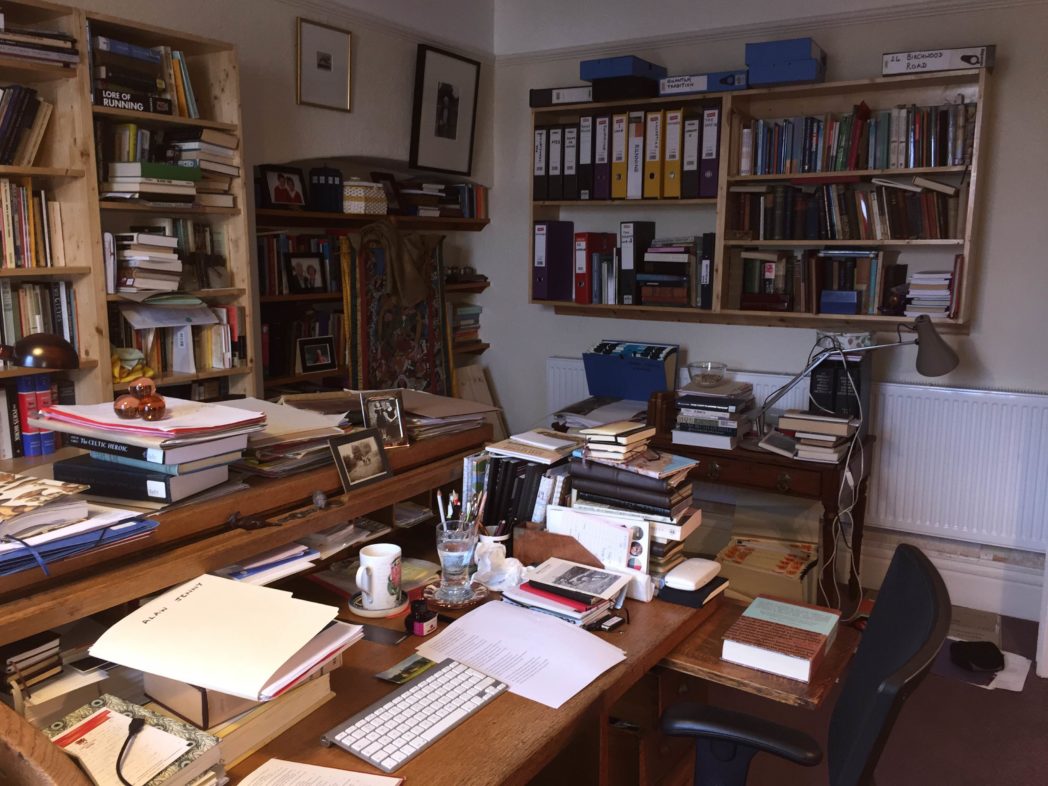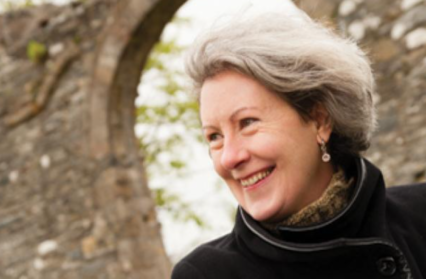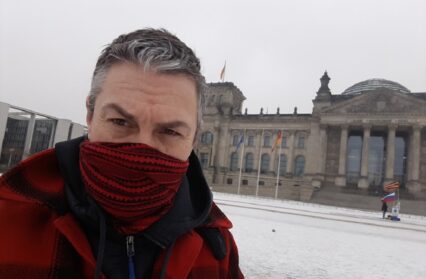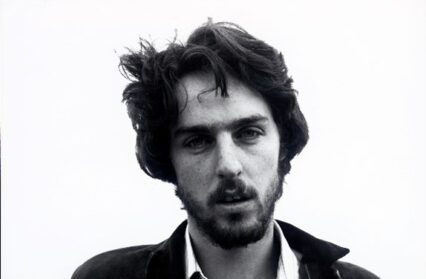Gwyneth Lewis is a world-renowned poet and author, and was Wales’ first National Poet. Gwyneth has written the first of our second series of Writers’ Rooms, where we look into the private work spaces of Wales’ top writers.

My husband accuses me of making ‘nests’ all round the house for writing. Each one is usually a corner with some cushions, a rug and a place to pile books and papers. These temporary studies are for guerrilla writing, when I’m not officially meant to be doing it. More formal work happens in this study. When we moved into the house twenty-four years ago, I had shelves for books made before we had any furniture downstairs. They delivered a sofa two years later and asked if we’d sat down at all during that time. So this particular nest has taken shape over quarter of a century.
The table is an old oak roll-top desk that Leighton bought for me in Albany Rd, Cardiff. It even has two secret drawers, though your secrets have to be very small to fit into them. I like to have postcards to look at along the top of the desk and these can easily be changed with my mood and preoccupations. At the moment, there are two from the Beyond Caravaggio exhibition at the National Gallery in London. Different projects are piled across the top of the desk (four at the moment: a screenplay, translations of Taliesin, poems for a new book in Welsh, poems for the next book in English), with a paperweight to show which is most urgent.
In the corner is a black and white photograph of Joseph Brodsky, taken by given to me by the magnificent David Hurn. Brodsky’s smoking and leaning against a gravestone with a wry look on his face, exactly right. I have a number of photos of poets who have been important to me, among them RS Thomas, Seamus Heaney and George Mackay Brown, all presents from kind photographers. It’s a slightly random pantheon. Next to Brodsky is an etching by David Jones of St Deiniol’s dog, a prancing greyhound which leapt into A Hospital Odyssey and started talking. The tangka shows Green Tara, given to me by a friend. The goddess is sexy but is stepping down from her throne, ready to help those in need. I need. Above Tara is a sewing box, a Tardis moneybox and a photograph of two of my grandchildren.
Writing this, I realise how much of this room has been given to me – the inkstand on the bookshelf belonged to my grandfather, as did the crucifix. This is an exact description of life as a writer, it’s only possible because of gifts from other people. Many of the books on the shelves – you’re looking at the theology section – have been recommended to me by others, all I have to do is listen and act on what I hear.
I have a high tolerance for mess. There are piles of files on the floor and unsorted papers which I tackle from time to time. I do know where things are though, so it’s a system of sorts. The files are a reflection of my interests at any given time, so they’re fluid.
As I spend so much time and my desk, I put things I like on it and these change. At the moment, I have a tiny wooden otter and a plastic bear which I found in the garden. I keep notebooks relevant to the work in hand on my desk. I’m not precious about stationery: old desk diaries will do me, though I have become a little fanatical about fountain pens and various inks. It’s like lipsticks selling well in a recession, you get a lot of pleasure from a small expenditure. At the moment, I’m using Rose Cyclamen ink in a Schaefer pen.
I’m glad to have a photograph of this room. Every item in it has been thought about and yet, in a couple of weeks we’ll be dismantling it and moving house. Then I’ll have to start from a nest of cushions and a blanket again. Exciting.
Gwyneth Lewis’ Writers’ Room piece is a part of a Wales Arts Review series.












